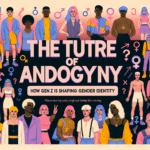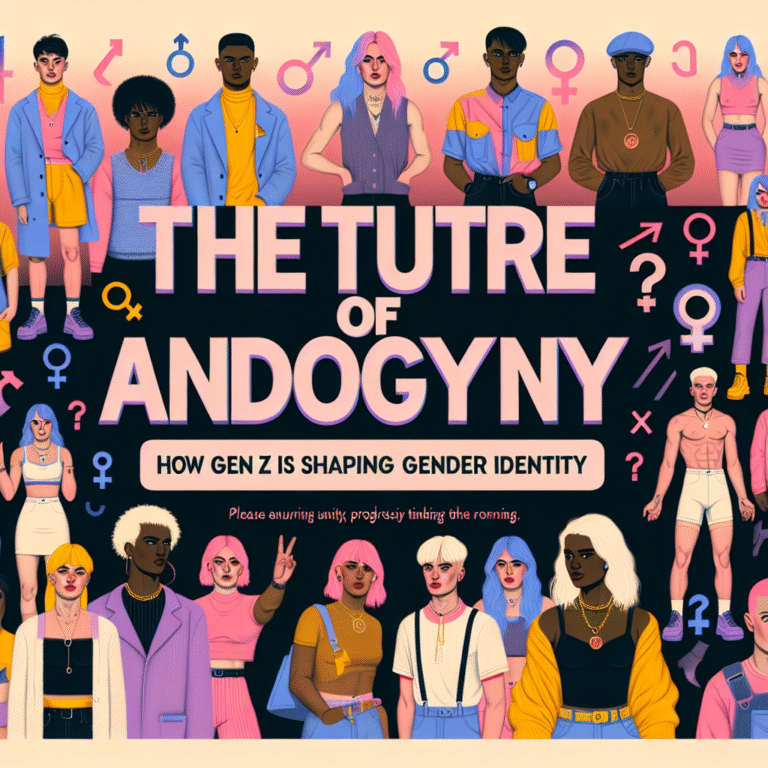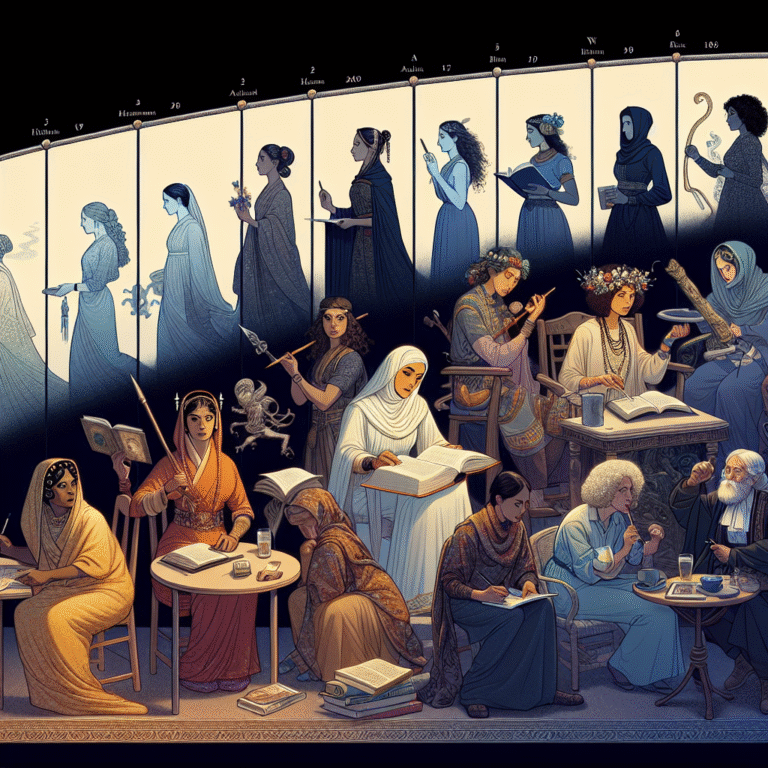
Introduction
In today’s interconnected world, social media has become an omnipresent force, shaping not only the way we communicate but also how we understand ourselves and our roles in society. As we navigate this digital landscape, one of the most pressing issues that emerges is the nuanced interplay between social media and the entrenched system of patriarchy. "Patriarchy in the Digital Age: Social Media’s Role in Shaping Gender Norms" reveals how our online interactions and the platforms we use both perpetuate and challenge traditional gender norms. This exploration is not merely academic; it has profound implications for gender equality and the future of societal structures.
The Framework of Patriarchy: Understanding the Basics
Defining Patriarchy
Patriarchy is historically defined as a system in which men hold the primary power, dominating in roles of political leadership, moral authority, social privilege, and control of property. It is a cultural construct that influences behaviors, attitudes, and expectations.
Gender Norms in Society
Gender norms are societal rules that dictate how individuals should behave based on their gender. These norms often stem from patriarchal values, influencing everything from career choices to personal relationships. The digital age complicates these norms, both reinforcing and challenging them through an ever-evolving medium.
Social Media as a Double-Edged Sword
Empowerment and Expression
One of the most powerful aspects of social media is its ability to empower marginalized voices. Platforms like Twitter, Instagram, and TikTok allow individuals, especially women and non-binary folks, to share their narratives, showcase their talents, and organize for political change.
Case Study: #MeToo Movement
The #MeToo movement serves as an exemplary case of social media’s role in empowerment. Originating on Twitter, it quickly gained traction worldwide, allowing individuals to share their experiences of sexual harassment and assault. This grassroots movement shattered the silence around patriarchal oppression and held powerful figures accountable, thus catalyzing discussions about consent and boundaries in the public arena.
Analysis: The #MeToo movement illustrates how social media can disrupt patriarchal narratives, fostering an environment where individuals can advocate for their rights and demand systemic change.
Reinforcement of Traditional Gender Norms
While social media amplifies marginalized voices, it can also perpetuate harmful stereotypes and patriarchal values. Influencer culture, for example, often upholds unattainable beauty standards and traditional femininity that align closely with patriarchal ideals.
Case Study: Influencer Marketing Trends
Research shows that female influencers are often pressured to adopt roles that emphasize traditional femininity, such as motherhood or beauty. This can reinforce societal expectations, making it difficult for women to escape the confines of the patriarchal box.
Analysis: The prevalence of gendered marketing reflects a digital patriarchy, where women are often placed into categories that uphold traditional norms, limiting the scope of their representation and identity.
The Role of Algorithms and Censorship
Algorithmic Bias and Its Implications
Social media platforms use complex algorithms to curate content, shaping what users see. These algorithms are not neutral; they often reflect existing societal biases, including those relating to gender.
Research Findings: Gender Bias in Algorithms
Numerous studies indicate that algorithms employed by platforms like Facebook and Instagram often prioritize male-centric content, perpetuating gender inequalities in visibility and engagement.
Table: Summary of Gender Bias in Social Media Algorithms
| Platform | Male-Centric Content Visibility (%) | Female-Centric Content Visibility (%) |
|---|---|---|
| 65 | 35 | |
| 70 | 30 | |
| TikTok | 60 | 40 |
Analysis: This table illustrates the disparity in content visibility, emphasizing how algorithmic bias can reinforce patriarchal structures in the digital landscape.
Censorship and Content Control
Censorship on social media platforms often disproportionately affects women’s voices. Content related to women’s rights, sexual health, and LGBTQ+ issues is frequently flagged or removed, stifling important discussions.
Case Study: Sex Education Content
Many creators focused on sexual health education have reported their content being removed or limited due to community guidelines, often citing “indecency” or “explicit material” as reasons. This undermines the ability to disseminate critical information about sexual health and consent, reinforcing patriarchal control over women’s bodies.
Analysis: Censorship highlights the precarious position of women’s voices in the digital space, where discussing autonomy and sexuality is often deemed inappropriate.
Digital Activism and Gender Representation
Movements Amplifying Feminism
The emergence of digital activism marks a transformative moment in the fight against patriarchy. Hashtags, viral campaigns, and online petitions help mobilize communities around pressing issues.
Case Study: Black Lives Matter and Feminism
The Black Lives Matter movement has incorporated feminist perspectives, addressing how intersectionality impacts both race and gender. Social media has been instrumental in spreading awareness of these intertwined issues.
Analysis: This case demonstrates how digital activism can break down silos between various social justice movements, fostering a more complex understanding of systemic oppression.
Gender Fluidity and New Norms
Social media plays a crucial role in challenging binary gender norms. The visibility of non-binary and gender fluid individuals contributes to a broader understanding of gender identity.
Case Study: The Rise of Gender Fluid Influencers
Influencers like Jaden Smith and Sam Smith use their platforms to challenge traditional gender norms, showcasing that masculinity and femininity are not strictly binary. Their influence encourages a more inclusive understanding of gender.
Analysis: The increasing visibility of diverse gender identities illustrates a shift in societal attitudes, revealing social media’s potential as a catalyst for progressive change.
Educational Programs and Awareness Raising
Societal Change Through Education
To dismantle patriarchal structures, it is crucial to educate individuals about gender norms and the power dynamics inherent in social media. Initiatives aimed at fostering digital literacy are essential.
Case Study: Digital Literacy Programs in Schools
Programs that teach young people about online behaviors, media literacy, and the impact of social media on gender perception are emerging globally. These initiatives aim to empower the next generation to navigate the digital landscape critically.
Analysis: Education is a vital tool in challenging patriarchy in the digital age, instilling values of equality and awareness about representation from an early age.
Conclusion
The discussion around "Patriarchy in the Digital Age: Social Media’s Role in Shaping Gender Norms" reveals the duality of social media as both an enabler of patriarchal structures and a platform for challenging them. While individuals can leverage these platforms for empowerment and advocacy, they can also become ensnared in the very norms they seek to dismantle.
Final Thoughts: As we continue to navigate this intricate digital landscape, it is essential to harness the power of social media responsibly. Individuals can champion the cause of gender equality by promoting diverse narratives, advocating for responsible content curation, and participating actively in digital activism.
FAQs
1. How does social media reinforce gender stereotypes?
Social media often curates content that aligns with traditional gender norms, thus reinforcing stereotypes by giving more visibility to male-centric narratives and idealized images of femininity.
2. Can social media promote gender equality?
Yes, social media can serve as a platform for advocacy and empowerment, allowing marginalized voices to share their stories, organize movements, and challenge patriarchal norms.
3. What are some examples of successful digital movements against patriarchy?
Movements like #MeToo and Black Lives Matter have successfully utilized social media to raise awareness and mobilize support against various forms of patriarchal oppression.
4. How does censorship impact women’s representation on social media?
Censorship often disproportionately targets content related to women’s rights, health, and sexuality, limiting discourse and further entrenching patriarchal norms.
5. What role does education play in combating patriarchy in the digital age?
Education raises awareness about media literacy, empowers individuals to question norms, and fosters an understanding of intersectionality, enabling meaningful progress toward gender equality.
As we navigate this complex, multifaceted dialogue, let us remind ourselves of the power we hold as digital citizens. Together, we can challenge the confines of patriarchy in the digital age, paving the way for a future defined by inclusivity, equality, and shared representation.
















